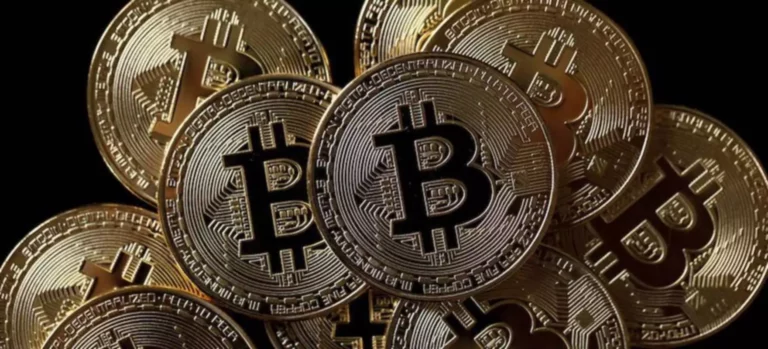Ethereum, on the other hand, is a pioneer in the blockchain house, known for introducing sensible contracts and enabling builders to build decentralized functions. It has a big and established ecosystem with a extensive range of purposes, tokens, and decentralized finance (DeFi) projects. Ethereum’s native cryptocurrency, Ether (ETH), is used for transactions and fuel charges throughout the network. It hosts more decentralized applications (dapps) than another blockchain ecosystem. However, during the what is solana crypto await the total rollout of Ethereum 2.zero, transaction costs can be exorbitant and wait times lengthy. Conversely, the Solana blockchain integrates a quantity of novel protocols, solving the trilemma of scalability, security, and decentralization.
What Are The Environmental Influence Issues For Solana And Ethereum?
In brief, because of this more ETH was burned than was launched into circulation. At the time of writing, ETH sits at round $3,129, roughly 35.7% down from its all-time high. On the opposite hand, proof-of-stake (PoS) works by validators, every having a considerable «stake» at risk (minimum of 32 ETH) and being randomly chosen to «attest» the validation of transactions. However, the Solana ecosystem is not any match for Ethereum in phrases of DApp security and decentralization. As talked about earlier, Ethereum was the muse for the whole DeFi business, together with the booming NFT market.
Ethereum’s Sensible Contract Capabilities
With significant momentum among developers and customers, the project established a large first-mover advantage for good contract networks. However, Ethereum’s popularity soon turned a constraint as it turned apparent that the platform couldn’t scale to assist the demand for block space, and ethereum fuel fees soared. When compared with Solana, Ethereum is the more well-liked cryptocurrency by a reasonably wide margin.
Solana’s Good Contract Capabilities
With the blockchain’s combined PoS and PoH consensus mechanism, Solana can process a most of fifty,000-65,000 TPS. While the blockchain can process an estimated 65,000 TPS, the precise transaction pace cruises far decrease due to the smaller variety of dApps currently deployed on the network. When it involves security, Solana utilizes a unique method to make sure the integrity of its network. Solana’s safety mannequin revolves round its Proof of History (PoH) consensus mechanism. This innovative design timestamps transactions earlier than they are added to the blockchain, enhancing the network’s overall security. When it involves transaction fees, Solana stands out for its cost-effective transactions.
Permissioned Vs Permissionless Blockchain: A Comprehensive Information
Solidity was the primary Turing-complete smart contract programming language for blockchains. Moreover, Wood devised the yellow paper for the smart contracts runtime protocol, Ethereum Virtual Machine (EVM). This process is critical to the integrity and compatibility of an software inside the Ethereum community, highlighting any bugs in the code. On a basic level, proof of historical past (PoH) is a method to “cryptographically confirm passage of time between two events”. In addition, every transaction or piece of data receives a singular timestamp displaying the state, index, and data using cryptographically secure hashes.
What Are The Several Types Of Blockchain Nodes?

Solana’s spectacular efficiency and rising ecosystem have attracted significant investment. Venture capital firms, institutional investors, and developers have proven curiosity in the Solana ecosystem. This pattern could continue as more tasks construct on Solana and its use circumstances expand. While block occasions are usually round 15 seconds, the affirmation of a transaction often depends on the gasoline value set by the sender.
Nors Certification: How Figment Is Helping Revolutionize Ethereum Staking Security Standards

The Ethereum blockchain has a mature and well-established ecosystem with an extensive vary of developer resources and tools. Devs can make the most of complete documentation, a variety of growth frameworks like Truffle and Hardhat, and testing environments such as Ganache. Solana’s ecosystem is rapidly growing, however it nonetheless has fewer initiatives, a smaller developer pool, and less TVL in comparison with Ethereum. Notable dApps constructing on Solana include Serum (DEX), Raydium (AMM), and Mango Markets (decentralized exchange). In November 2021, ETH reached a model new all-time excessive of $4,878, according to CoinGecko. Furthermore, it was in August 2021 that a revolutionary adjustment to the ETH token mechanism came into play.
- This doubtlessly makes ETH deflationary though the availability has remained secure at around a hundred and twenty million because the Merge, and based on most analysts, it will remain the case within the foreseeable future.
- This article features a comparative analysis of these two blockchain giants, exploring their unique options, strengths, and main differences.
- As a end result, the transactional throughput of Solana was 10,000 instances quicker than other leading chains.
- The historic context units the stage for an thrilling comparison between two heavyweights shaping the future of cryptocurrencies.
- By the tip of September 2022, the complete Network will transit to an alternative consensus mechanism – Proof-of-Stake (PoS).
- Solana’s ecosystem is quickly rising, however it still has fewer initiatives, a smaller developer pool, and fewer TVL compared to Ethereum.
Solana Vs Ethereum: Key Variations
With a throughput of over sixty five,000 transactions per second, Solana’s community can handle a excessive volume of transactions swiftly and efficiently. In distinction, Ethereum presently processes round 15 transactions per second, leading to congestion throughout peak utilization occasions. This stark contrast in transaction velocity and capacity showcases Solana’s advantage over Ethereum in relation to scalability and usefulness. Both Solana and Ethereum have their strengths and weaknesses, catering to completely different wants throughout the blockchain ecosystem. Understanding the important thing differences of their design, consensus mechanisms, and use circumstances is important for buyers, builders, and customers seeking to leverage blockchain know-how successfully. This is achieved through various means – for instance, layer 2s that use “rollups” bundle a quantity of transactions into one transaction, which is then posted to the Ethereum mainnet.
Once validators operating Firedancer come online, the Solana mainnet could see dramatic leaps in throughput and effectivity. Its prowess, nonetheless, has been lately challenged by newer entrants like Solana, who promise next-gen options for the modern crypto fanatic. Interoperability solutions may bridge the gap between Solana and Ethereum, permitting belongings and knowledge to move between the 2 ecosystems.
On the other hand, Solana has a stateless architecture, with no need to update the entire state of the Solana blockchain with every new transaction. Solana’s architecture depends heavily on the Solana cluster, a collection of validators working collectively to deal with client transactions alongside ledger maintenance. Every cluster has its own leader, and the role continues rotating among the validators. The cluster chief is responsible for bundling and timestamping the incoming transactions using PoH consensus.
Ethereum’s established presence and in depth ecosystem make it a preferred choice for retail and institutional traders in search of additional publicity to blockchain expertise and cryptocurrency in addition to just Bitcoin. The growth of the Ethereum ecosystem is heavily influenced by neighborhood participation through Ethereum Improvement Proposals (EIPs). This primary mechanism for proposing modifications to the Ethereum protocol is clear and inclusive, allowing anybody to submit an EIP and contribute to the dialogue and refinement of proposals. Some of essentially the most notable EIPs embody EIP-20, which standardized the ERC-20 token standard, and EIP-1559, which introduced a new fee structure to enhance transaction pricing and scale back volatility. The Solana ecosystem also supports programming in Rust, C, and C++, catering to builders who prefer these languages for his or her efficiency and security features. Hackathons, grants, and community initiatives additional incentivize and support builders in building on Solana.
Ethereum built the ERC-20 token commonplace, which is a model for how programmers make fungible tokens. It is unusual to consider business requirements in the world of crypto, as it suggests some level of centralized control or a hierarchy of some kind. Yet, to create a worldwide and distributed network, you have to have some codes of conduct and guidelines for implementation. In this sense, Ethereum units the tone and normal that the remainder of the house typically follows.
Conversely, Solana’s progressive strategy with PoH goals at fortifying the community in opposition to potential vulnerabilities by providing a verifiable historical past of events on the blockchain. Not every little thing is peachy for Solana and Ethereum – each has a set of unique challenges they want to overcome before the blockchains can actually achieve widespread adoption. From a purely scalability standpoint, Solana’s blockchain is simply significantly better than Ethereum’s – though the Ethereum Virtual Machine (EVM) developers have frequently put work into bettering its inefficiencies. Nothing speaks more to Solana’s excellent progress than the “flippening” that occurred in late 2023, when for the first time ever, Solana’s every day transaction quantity outpaced Ethereum’s.
Solana’s approach to scalability stems from its unique consensus mechanism and structure. By combining Proof of History with Proof of Stake, Solana has achieved remarkable transaction speeds that outperform many other blockchain platforms. This progressive design allows Solana to course of over 65,000 transactions per second, showcasing its scalability benefit over rivals like Ethereum. The high throughput and low transaction charges on Solana make it a beautiful option for users and developers looking for efficient and cost-effective blockchain options. Ethereum is renowned for pioneering sensible contracts and hosting a extensive array of decentralized functions (dApps) and decentralized finance (DeFi) tasks.
Read more about https://www.xcritical.in/ here.


